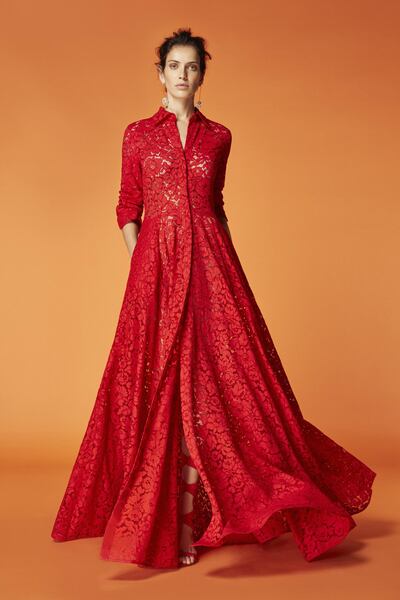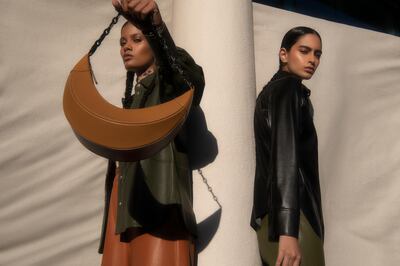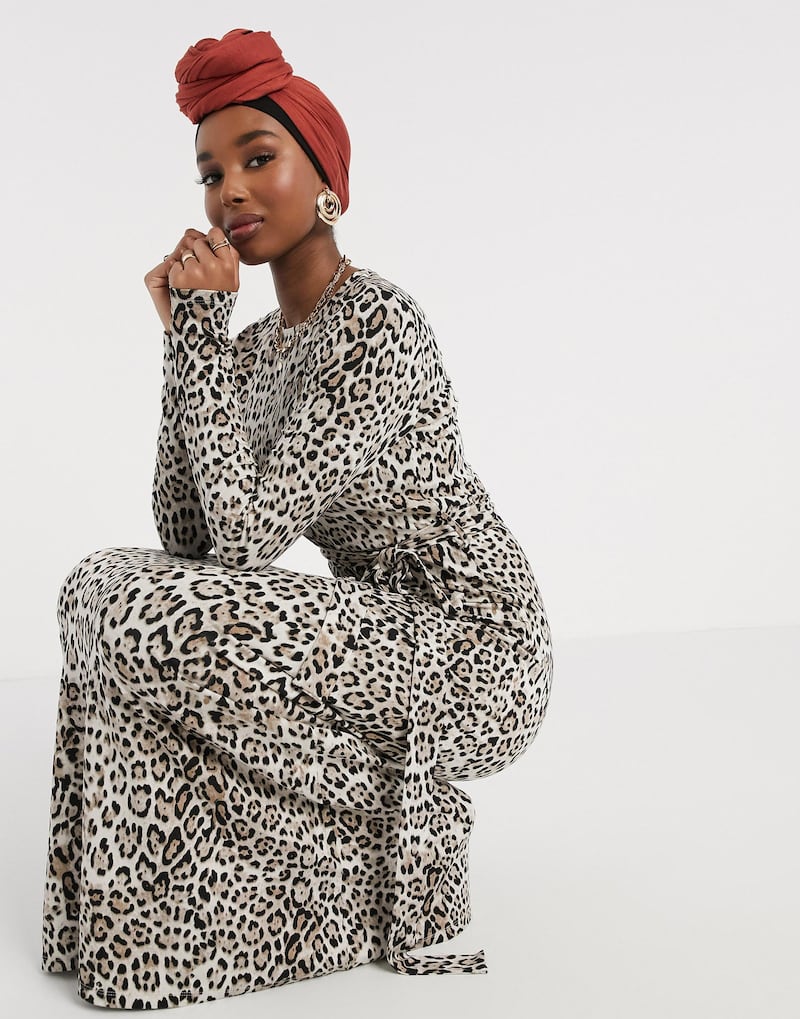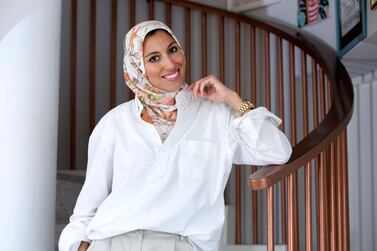A decade ago, shopping for clothes to wear during Ramadan mainly involved stocking up on kaftans and decorative abayas from local souqs. But the Ramadan retail market has since evolved, with names such as Michael Kors, Oscar de la Renta and Dolce & Gabbana entering the landscape.
It all started in 2014, when American label DKNY launched a capsule collection for Ramadan, kicking off a trend many other western brands would come to follow. Six years on, Tommy Hilfiger, Burberry and H&M have all experimented with longer hemlines, flowing silhouettes and headscarves for their Middle East clientele during the holy month.
Then came the rise of modest fashion, which is now a thriving retail category, thanks to hijab-wearing models and modest fashion bloggers shedding light on the demand for conservative cuts. Financial projections, too, show this fashion segment as a lucrative one; the State of the Global Islamic Economy Report 2019-20 estimates that spend on fashion by the Muslim community tallied up to $283 billion (Dh1 trillion) in 2018, projected to grow to $368bn in 2021 and reach $402bn by 2024.
However, Ramadan-exclusive collections have drawn criticism, both from the West and the East. In a 2016 article for Refinery29, Zahra Al Jabri, the American-Muslim founder of early modest wear website Mode-sty, said her main issues with Ramadan collections is that they are often only available in the Middle East, where a mere 20 per cent of the world's Muslim population resides. She also said they are too expensive, and that some are simply not modest enough, often designed with high slits, low necklines and sheer fabrics. Ramadan ranges from Mango, for instance, have featured strappy dresses and sleeveless tunics, which Al Jabri deems "improper".
Emirati-Mexican fashion blogger Ashley Al Busmait believes, in the Middle East, it comes down to understanding the local style aesthetic. “Some labels attempted to cater to the GCC market with campaigns that soon backfired. This is due to a lack of understanding of the trends that are established locally and the profile of the audience they are trying to tap into,” she says. While it was not made for Ramadan, Dolce & Gabbana's 2019 abaya collection, she says, with its “sunflower and leopard-print” designs, is an example of a poorly executed attempt to cater to women in the Middle East.

Carolina Herrera’s 2017 abaya collection, meanwhile, was a hit, according to Al Busmait because “it featured impeccably tailored pieces using modern fabrics while still maintaining the modesty element”. For Ramadan this year, Carolina Herrera presents a bright yellow kaftan with an embroidered keyhole neckline, while Michael Kors has a navy metallic dress with scattered daisies, and another with a floral ombre effect and matching shayla.
Ramadan is also a time when trends overall change: silhouettes become loose, airy and culturally inspired, and kaftans become a key piece in your wardrobe, even if floaty and feminine styles are not what you wear for the other 11 months of the year. Besides this, Al Busmait believes there is room for designers to experiment with modest trends. “I often see pieces that are overly decorative or limited to kaftans and dresses, whereas women are also experimenting with minimalist, tailored silhouettes such as matching sets,” she says.
Ana Canadas, brand marketing director at online store Farfetch, also says there is more to Ramadan-appropriate fashion than kaftans. “Customers look for pieces that are stylish and easy to wear – kaftans, shirt dresses, maxi skirts and pyjamas-style sets tend to be the products of choice during this period,” she says. Canadas acknowledges that while many women attend the iftars and suhoors that take place in hotels and restaurants during the month, others observe the occasion at home.
“There is a segment of consumers who opt for more opulent dresses with heavy embellishment and beautiful head accessories, from turbans to headbands and scarves. Homeware is another category that gets a lot of attention, since this time of year is very family-oriented and anchored in togetherness, so people spend a lot of time in the home.”
E-retailers such as Net-a-Porter, Moda Operandi and Farfetch promote “Ramadan edits” that include a curated selection of garments suitable for the season. On Farfetch, a brocade Saint Laurent dress, cotton kaftan by Jil Sander and Fendi mules can be found in this year’s selection. Al Busmait says this approach works well for shoppers. “It makes it easier to style cohesive looks without having to browse through pages and pages,” she says.

Canadas says: “It is important to buy quality and versatile pieces that allow you to get the most out of your wardrobe all year long. Understand what core pieces are available from the trends you might want to buy into, and then adapt them to create modest looks.”
Taller Marmo, a brand born in Dubai and now based in Milan, has incorporated kaftan-inspired silhouettes in its spring / summer 2020 range. Designer Yago Goicoechea believes that the styles can be worn throughout the year. “We don’t like to specifically pertain to it as ‘Ramadan fashion’, like it would cease to exist after that. We think what the client wants is a product that they can relate to; a product high in quality, creativity and storytelling,” he says.
“A globalised market gives a positive stimulus to designers and creatives. It makes our ideas cross-pollinate,” says Goicoechea. Such is the case with modest fashion in general – pieces that may not at first stand out as conservative can be styled as such.
“You do not have to exclude the idea of a slip dress, as you can layer a slip over a light turtleneck,” Canadas says.
Brands are becoming savvy with trends such as layering. The homepage of high-street e-retailer Asos features a “Ramadan Edit” banner, along with a dark-skinned model wearing an edgy, orange, animal-print ensemble and black turban. “We want our diverse customer base to feel represented by the models they see,” says Sian Ryan, head of design at Asos. “As well as having year-round modest-wear edits, we are working with an influencer to launch a selection in time for Ramadan.”
Perhaps this wide-reaching approach of offering curated looks that speak to different budgets, styles, cultures and levels of modesty, as opposed to creating ritzy, one-off exclusives, is more apt.
Designs released in time for Ramadan this year may be very different from the themes of the past. As the UAE and other countries attempt to contain the coronavirus pandemic, it's possible social distancing measures will continue for the next few weeks. This means we may observe a spiritual month without the hotel iftar and suhoor buffets. Perhaps this will be the year comfort trumps glamour in the realm of Ramadan style – a trend that may stick in the years to come.






